- Forum
- General Discussion | Introductions | Off Topic Forum
- Photography General Discussion
- Why is fast lens important?
Why is fast lens important?
-

- Baydream
- Moderator
-
- Canoni/60D/70D/5DmkIII
- Followers: 388
- Posts: 11185
-
Points:
7280
Post #159144
Justin Black wrote: A fast lens isn't important. The pictures that you wish to make are important. If a fast lens is the tool that will help you make the pictures that you want, then by all means use one. If not... fast glass may not be necessary.
Photographers who only make traditional landscape pictures may never need fast glass. I used a 4x5 view camera for close to 20 years and only on a rare occasion made an exposure wide open and I was using lenses with maximum apertures of f/5.6, f/9.0, and f/11! Most exposures with the 4x5 were made at f/16, f/22, or f/32.
One of my most important mentors, Galen Rowell, routinely used those "amateur" zooms like the Nikkor 24-50mm f/3.3--4.5, and even the cheap little 28-80 f/4.5-5.6 kit lens. He made some great pictures that enlarge well to 32"x48" prints with those lenses, because after testing them rigorously he discovered that they were very good indeed when used between f/8 and f/22. The reason he sought them out in the first place was because they were very compact and light in weight, and he took them rock climbing, trail running, and mountaineering. Of course, he also owned fast glass like an 80-200 f/2.8, a 35mm f/1.4, 85mm f/1.4, and 300mm f/2.8, but he VERY RARELY took any of those on self-propelled trips into the mountains.AFter reading so many Rowell stories, I can see why he would not always use expensive glass. A true master.
It's just a matter of selecting the right tool for your photography.
Shoot, learn and share. It will make you a better photographer.
fineartamerica.com/profiles/john-g-schickler.html?tab=artwork
-
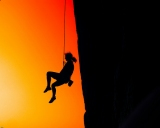
- MYoung
- Master of the Lens
-
- Sony a7s II, Nikon D750
- Followers: 486
- Posts: 1627
-
Points:
12120
Post #159321
Scotty wrote:
520snic wrote:
Scotty wrote: I shoot at f/2.8 all the time.
Why? on all your lenses? I understand having more light, but don't you ever want more of a DOF?
Of course, don't you ever want thinner depth of field?
I don't think the question was about the OP not wanting a thinner DOF. The question was more as to why photographers seem to always want a faster lens.
Do you and other photographer here, who shoot at 2.8, ever shoot a greater depth of field? F4? F5.6?. f8? etc...If not, why not?
f2.8 is very narrow, not much get be in focus.....unless your subject is completely in a straight line to be in focus for a f2.8.
-
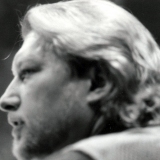
- Rob pix4u2
- Photo Guru
- Nikon N90s & FE film & D90 and D90 digital bodies
- Followers: 196
- Posts: 4204
-
Points:
30
Post #159332
Remember to engage brain before putting mouth in gear
Rob Huelsman Sr.
My Facebook www.facebook.com/ImaginACTIONPhotography
Post #159336
Rob pix4u2 wrote: I shoot at 2.8 all the time shooting hockey-indoor sports demand the fastest lens possible
Awesome shots!
If those are shot at 2.8, why does it seem the net behind the player is a tad in focus? Here I always thought the subject is in focus, but anything behind it is more like a blur.
-

- Rob pix4u2
- Photo Guru
- Nikon N90s & FE film & D90 and D90 digital bodies
- Followers: 196
- Posts: 4204
-
Points:
30
Post #159344
Remember to engage brain before putting mouth in gear
Rob Huelsman Sr.
My Facebook www.facebook.com/ImaginACTIONPhotography
-

- Screamin Scott
- Moderator
-
- Nikon D610, Nikon D7100, Nikon D300, Olympus OMD E-M5 MarkII, Olympus OM-D E-M10, Olympus Pen E-P3 + film SLR's
- Followers: 1384
- Posts: 6866
-
Points:
40251
Post #159463
denhim1 wrote:
Rob pix4u2 wrote: I shoot at 2.8 all the time shooting hockey-indoor sports demand the fastest lens possible
Awesome shots!
If those are shot at 2.8, why does it seem the net behind the player is a tad in focus? Here I always thought the subject is in focus, but anything behind it is more like a blur.
How much DOF you have is determined not only by the F stop, but also by the lens's focal length & the distance to the subject...
-

- Henry Peach
- Apprentice
-
- I currently use a 5DII or Sony Nex-3 most of the time.
- Followers: 50
- Posts: 2925
-
Points:
16
Post #159603
denhim1 wrote: ... why photographers seem to always want a faster lens.
It's the upgrade. Almost everyone falls into one of two groups: those who need the upgrade, and those who want the upgrade.
denhim1 wrote: Do you and other photographer here, who shoot at 2.8, ever shoot a greater depth of field? F4? F5.6?. f8? etc...If not, why not? f2.8 is very narrow, not much get be in focus.....unless your subject is completely in a straight line to be in focus for a f2.8.
My DOF is significantly influenced by three factors: focusing distance, focal length, and aperture. At macro photography distances f/11 can be razor thin. At the other extreme even f/1.4 has a hyperfocal distance where DOF becomes infinite behind the subject. I use all the f/stops at one time or another to control both DOF and exposure. A f/5.6 lens is fine if I'm working at f/5.6 or smaller aperture. It only becomes a problem when I need a large aperture.
Not too long ago most 35mm SLRs came standard with a f/1.8 50mm lens. It's only since zooms got better and became so popular that f/2.8 is considered all that fast or narrow.
-

- Rob pix4u2
- Photo Guru
- Nikon N90s & FE film & D90 and D90 digital bodies
- Followers: 196
- Posts: 4204
-
Points:
30
Post #159833
Remember to engage brain before putting mouth in gear
Rob Huelsman Sr.
My Facebook www.facebook.com/ImaginACTIONPhotography
-
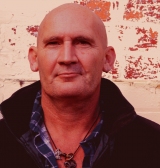
- pottsy62
- User is blocked
-
- Canon EOS 600D, 400D Rebel XTi
- Followers: 173
- Posts: 966
-
Points:
0
Post #159840
10Justin Black wrote: A fast lens isn't important. The pictures that you wish to make are important. If a fast lens is the tool that will help you make the pictures that you want, then by all means use one. If not... fast glass may not be necessary.
It's just a matter of selecting the right tool for your photography.
Hope this is of some help to you.
-
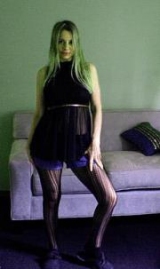
- mirella
- Newbie
- Followers: 5
- Posts: 2
-
Points:
0
Post #159842
-
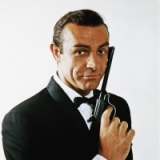
- Scotty
- Agent 007
- James Bond, PT mod.
- Followers: 1088
- Posts: 9888
-
Points:
15096
Post #159862
denhim1 wrote:
Scotty wrote:
520snic wrote:
Scotty wrote: I shoot at f/2.8 all the time.
Why? on all your lenses? I understand having more light, but don't you ever want more of a DOF?
Of course, don't you ever want thinner depth of field?
I don't think the question was about the OP not wanting a thinner DOF. The question was more as to why photographers seem to always want a faster lens.
Do you and other photographer here, who shoot at 2.8, ever shoot a greater depth of field? F4? F5.6?. f8? etc...If not, why not?
f2.8 is very narrow, not much get be in focus.....unless your subject is completely in a straight line to be in focus for a f2.8.
One of those reasons is thinner depth of field.
When the last candle has been blown out
and the last glass of champagne has been drunk
All that you are left with are the memories and the images-David Cooke.
-
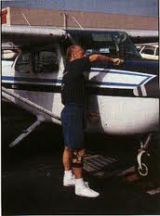
- Pettigrew
- Photography Hooked
-
- Canon EOS 7D SLR
- Followers: 199
- Posts: 986
-
Points:
8280
Post #159942
Henry Peach wrote:
denhim1 wrote: ... why photographers seem to always want a faster lens.
It's the upgrade. Almost everyone falls into one of two groups: those who need the upgrade, and those who want the upgrade.The gear has obsessed photographers since the very beginning. I've read accounts from the 1800s discussing gear, and if you just inserted the brands "Canon" and "Nikon" it would be like many posts you see today. Photography is a very technologically oriented activity. It attracts people who like fiddling and comparing the gear.
denhim1 wrote: Do you and other photographer here, who shoot at 2.8, ever shoot a greater depth of field? F4? F5.6?. f8? etc...If not, why not? f2.8 is very narrow, not much get be in focus.....unless your subject is completely in a straight line to be in focus for a f2.8.
My DOF is significantly influenced by three factors: focusing distance, focal length, and aperture. At macro photography distances f/11 can be razor thin. At the other extreme even f/1.4 has a hyperfocal distance where DOF becomes infinite behind the subject. I use all the f/stops at one time or another to control both DOF and exposure. A f/5.6 lens is fine if I'm working at f/5.6 or smaller aperture. It only becomes a problem when I need a large aperture.Like a lot of tools the one with more options is larger and more expensive, but if you don't need those options it might be smarter to go with the smaller, cheaper tool.
Not too long ago most 35mm SLRs came standard with a f/1.8 50mm lens. It's only since zooms got better and became so popular that f/2.8 is considered all that fast or narrow.There is plenty of shooting to be done above and below f/2.8.
Good post
Canon EOS 7D SLR | XT W/18-55 Kit Lens | Canon 50mm 1.8 | Tamron 17-50mm 2.8 | Canon 28-105mm | Canon 75-300mm | Canon 100mm 2.8 Macro | Canon 100-400
- Forum
- General Discussion | Introductions | Off Topic Forum
- Photography General Discussion
- Why is fast lens important?
Latest Reviews
The Olympus Pen E-P7 is an affordable micro four thirds mirrorless camera with 4K video capabilities, a 20.3MP sensor, and 121 focus points, making it a solid entry-level camera for beginners.
The Panasonic G9 II is a 25.2-megapixel micro four thirds camera with numerous features that make it punch out of its weight class, like 779 AF points, 5.8K video, and weather sealing.
The Fujifilm XT5 is a 40MP mirrorless camera capable of 6.2K video at 30p. With those specs, it’s an ideal choice for photographers needing a camera to pull double duty for imaging and video.
The Canon EOS R100 is an entry-level mirrorless camera introduced in 2023. But just because it’s an entry-level camera doesn’t mean it’s a bare-bones camera. Find out why in this review!
Forum Top Posters
-
1Scotty 7 posts
-
2Roman Omell 4 posts
-
3Razky 4 posts
-
4Ruby Grace 3 posts
-
5Pat White 3 posts
-
6Nefarious 3 posts
-
7ShutterPal 3 posts
-
8Roger Lang 3 posts
-
9Jim Photo 3 posts
-
10CharleyL 3 posts
Latest Articles
In this guide to the bokeh effect, you’ll learn what bokeh is and the factors involved in creating it. You’ll also explore some beautiful example images to spark your creativity with bokeh!
Upgrade your kit in 2024 with the best intermediate camera on the market! The question is, what camera fits the bill? We’ve got three top options for you to choose from in this buyer’s guide.
The best photography jobs right now are a mix of tried-and-true gigs like wedding photography and new jobs highlighting AI’s capabilities, travel, and videography.
The Olympus Pen E-P7 is an affordable micro four thirds mirrorless camera with 4K video capabilities, a 20.3MP sensor, and 121 focus points, making it a solid entry-level camera for beginners.
Starting a photography business is one thing; sustaining your business over a long period of time is another. Use the tips in this professional photography guide to build something with longevity!
The Panasonic G9 II is a 25.2-megapixel micro four thirds camera with numerous features that make it punch out of its weight class, like 779 AF points, 5.8K video, and weather sealing.
Cinematic photography is an interesting genre that combines photographic and videographic skills along with effective storytelling techniques. The result? Highly impactful images!
Newborn photography requires skill, the right gear, and a lot of patience. This beginner’s guide discusses critical topics that will help you be more prepared for before, during, and after the shoot.


















